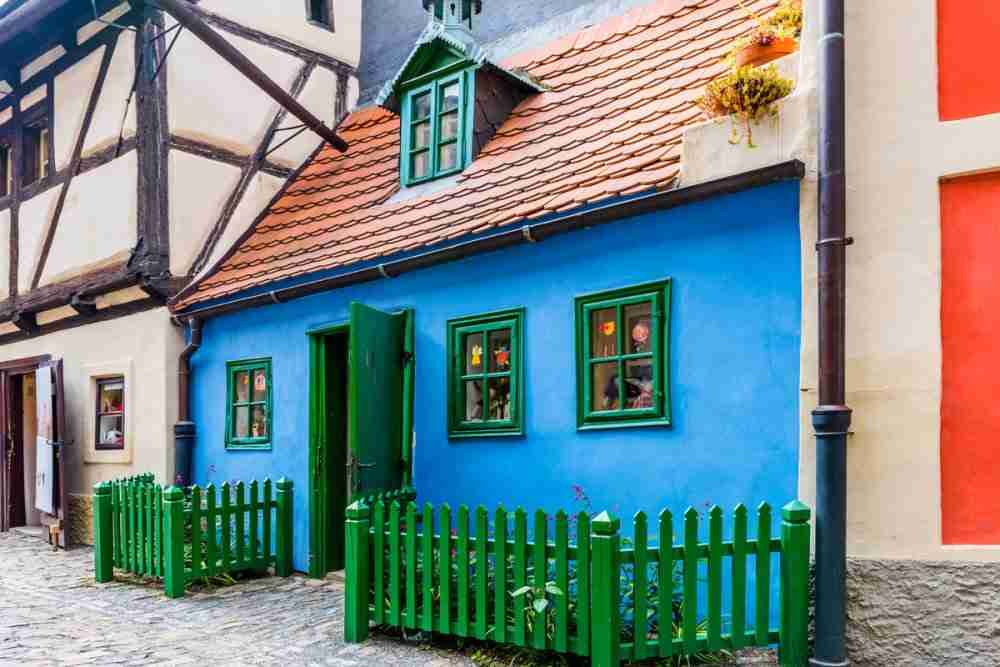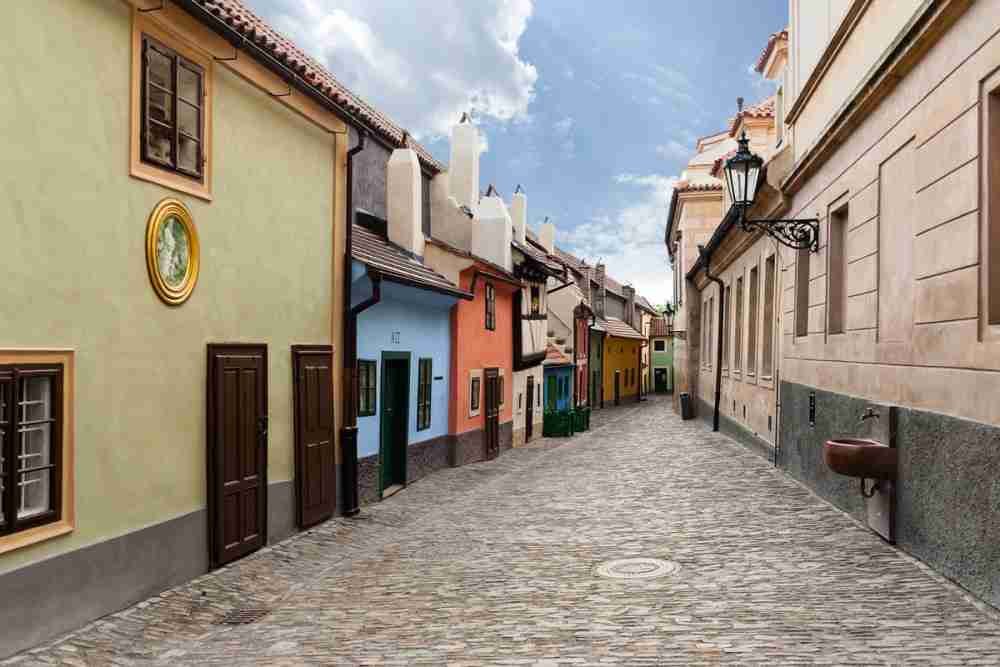The Golden Lane in Prague Castle is probably the most famous street in the Czech capital and one of the top 10 sights in Prague.
In this complete guide to the Golden Lane, you'll learn all about the sights and history, as well as helpful information about directions, tickets, and tours.
What Can I Do on the Golden Lane?
The Golden Lane, also known as Alchemists' Lane or Goldmakers' Lane, is part of Prague Castle and has become one of the most visited attractions within the castle complex.
The historical street from the 16th century is famous mainly for the reason that the alchemists supported by Emperor Rudolf II are said to have worked here to unravel the mystery of the artificial production of gold as well as to find the philosopher's stone.
Visitors can see the dozen or so houses that line the street, which is almost 100 meters long. Walking along the picturesque street, visitors can follow the traces of former inhabitants and see how the working class of Prague lived in the 16th century.
The medieval interiors can be admired as well as the exhibitions, which are presented in the colorful houses and illustrate the life on Alchemist's Lane from 1600 to 1956. Especially exciting are the exhibitions of medieval armor and torture objects, which are displayed in the long battlement on the 1st floor above the alley.
Many of the historic houses also serve today as souvenir or craft stores. Some also offer medieval activities such as crossbow shooting.
Those who wish can reach the terrace in front of the Daliborka Tower via the stairs in house No. 12. The cannon tower served as a prison until 1781 and can also be visited as part of a sightseeing tour.
Special Houses
Franz Kafka Residence: One of the most famous houses is the house with the number 22, where the writer Franz Kafka lived and worked from 1916 to 1917.
Jaroslav Seifert Residence: Another former resident of the Golden Lane is Jaroslav Seifert, who won the Nobel Prize for Literature in 1984.
House No. 12: Poets and writers such as Vítězslav Nezval u Jiřího Mařánka, František Halas, and Jaroslav Seifert used to meet in this residential house.
House No. 13: House No. 13 gives an insight into the life of a castle gunner.
House No. 14: The famous fortune teller, Matylda Průšová, lived here.
Admission, Tickets, and Guided Tours
- Admission: Admission is included in the regular Prague Castle entrance ticket. The Golden Lane can also be visited for free after 6 pm. However, after 6 pm all buildings are closed.
- Tickets: Admission to the Golden Lane is included in the Prague Castle admission ticket. The ticket is valid for two consecutive days. Each attraction, can be visited only once. Buy a skip the line ticket for Prague Castle here in advance and avoid standing in line!
- Tours: Several tour operators offer guided tours of Prague Castle. Book here the most popular guided tour of Prague Castle, including entrance ticket.
- Tip: Since there is always a big crowd in front of the ticket counters on site, it is recommended to buy an online ticket in advance.
Please note: There is a security check at the entrance to the Prague Castle area, which all visitors must undergo.
How Do I Get to the Golden Lane?
The Golden Lane is located on the inner wall of Prague Castle, which stands on a hill in the center of Prague.
The easiest way to reach the castle is by public transport, taking streetcar line 22. You can take it from the Old Town to the Pražský hrad (Prague Castle) station.
The Golden Lane is located on the northeastern wall of the castle, between the White Tower and Daliborka Tower.
History of the Lane
The beginnings of the Golden Lane go back to the construction of the northern fortification in the 15th century.
The total of 24 castle guards of Emperor Rudolf II, the so-called red marksmen, needed accommodation. For this reason, the emperor gave the order to build houses for his guards.
Over the course of the 16th century the alley became more and more popular and servants of the castle as well as craftsmen, innkeepers, and goldsmiths moved into the small houses. The alley owes its present name to the goldsmiths. According to legend, these goldsmiths were the alchemists of Emperor Rudolf II, who had a passion for alchemy. Under his reign, Prague developed into the stronghold of alchemy.
In the 19th century, however, the houses and the area were very run down, so they were inhabited only by people suffering from poverty. Nevertheless, the place became a popular meeting place for the intellectual scene. The buildings were still inhabited until the Second World War.
After subsequent renovation work, in which the character of the alley was preserved, the charming Golden Lane with its small, colorful houses developed into a tourist magnet.
Contact
- Address: Golden Lane, Zlatá ulička 119 00 Praha 1-Hradčany
- Website: https://www.hrad.cz/en/prague-castle-for-visitors#from-list
- Public Transport: Bus line 22 to the Pražský hrad stop
- Ticket: … Link own ticket…
- Opening Hours: The opening hours of the Old Royal Palace can be found on the Prague Castle website.




